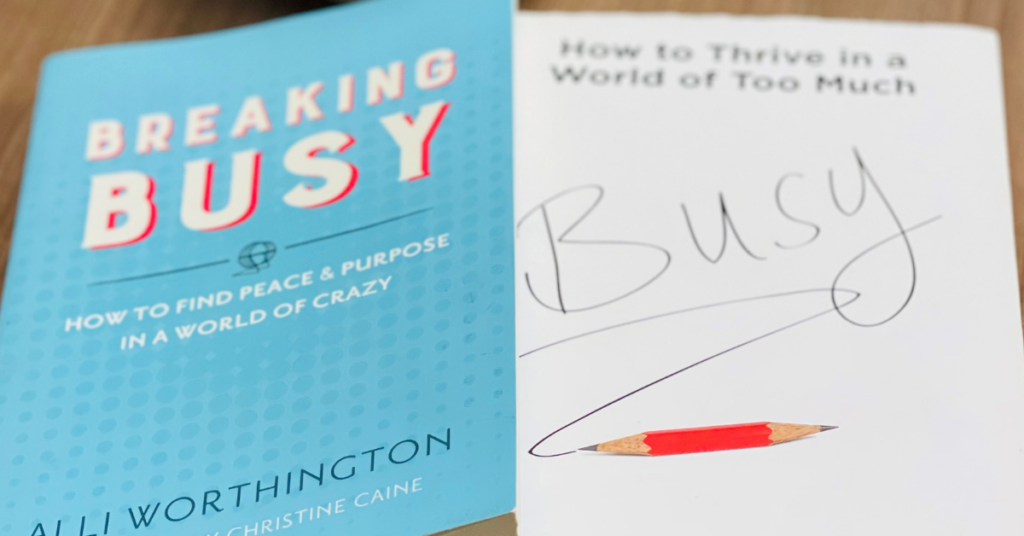Choose to Remain Productive Rather than Busy

Being busy is a form of laziness – lazy thinking and indiscriminate action. Being busy is most often used as a guise for avoiding the few critically important but uncomfortable actions
— Tim Ferris
Thinking back to before COVID-19 stopped us in our tracks, many of us were busy beyond belief until we were forcibly thrown into a lockdown. While we have bits and pieces of our pre-coronavirus lives, we still are heavily restricted in what we can do keeping most of us focused on what is necessary.
2021 has hardly arrived yet many are already singing her praises. We finally have vaccines to combat COVID-19 and folks are eagerly making plans for when we return to “normal” or whatever new version of “normal” it may be. I challenge you to tread carefully as you refill your calendar by being mindful of what you may be saying “no” to when you say “yes.”
Roughly five years ago, I pledged to stop being “busy.” In 2015, I posted the following on my personal Facebook page:
After reading several articles including this one, I’ve been focusing hard all March on not having the “busy” or “crazy” sickness and it’s amazingly freeing. Fact is…as “busy” as everyone thinks I am, I work earnestly to only do those things that will add meaning and happiness to my life. I truly love my life so when you ask me how I am…I’m great and my life is rich. If I dare tell you I’m busy, then my balance is off, my gratitude tank is empty, and I’m doing too much. You’re entitled to tell me to cool my jets.
Via Amy Calandrino’s Facebook page, 2015
Since then, it has been a pet passion of mine to eradicate busy-ness from my life. I do this by focusing on what quality activities and relationship tie into my goals. For me, faith, family and fitness come first and those in my inner circle also subscribe to that mindset. By putting those, three F’s first, I am then able to serve others through my work professionally and also in the community. I also do not use the “busy” word. While there’s much I achieve daily, I don’t feel “busy”…I feel content, happy, fulfilled, and productive. When I do truly feel “busy”, it’s usually a warning sign that the activity I’m performing or person I’m with isn’t in alignment with my personal beliefs.
You may be wondering how did I make this transformation? It didn’t happen overnight. In this article, I will share some tools and resources that I used to bring intention and focus to each day.

First things first. Start small. Put into play these three strategies:
- Stop prioritizing unimportant tasks. Use Stephen Covey’s famous Eisenhower matrix which categorizes activities into four quadrants: (1) Urgent and Important, (2) Urgent and Not Important, (3) Important and Not Urgent, and (4) Not Urgent and Not Important. Rather than prioritizing not important tasks, consider working in Quadrant 3 on work that will strengthen your business and better your life. If you want more clarity on Covey’s methodologies, read “The 7 Habits of Highly Effective People” once you’ve implemented the next two steps of course.
- Center yourself. Understand your core values and center your time around those activities squarely in tune with those values. For me, I found that I felt the most fulfilled helping underserved populations to be successful. Since I view success as helping others to be successful, I began to focus on organizations that align squarely with this personal mission of mine to bring me the greatest level of fulfillment. For instance, Inspire of Central Florida equips special needs adults in Central Florida with the resources to live, work, and succeed through their educational, vocation, residential, and transportation services By being intentional about what I support, I am able to create more joy in my life, but also spread that throughout the community.
- Take control. Remember that only you are the gatekeeper for your time. Make conscious choices on how you are going to spend your time enabling you to focus on the relationships and work that matters. If you continue to say “I’m busy” or “I ran out of time” then you are perpetuating the busy cycle rather than taking control of your time. An example of how I time block and schedule my time is available here.
For further reading, check out these two books. The first I recommend is “Breaking Busy”, which provides guidance on boundaries, relationships, and self-care to regain power and peace in your life.
The second book by Tony Crabbe titled “Busy: How to Thrive in a World of Too Much” sets forth four strategies to become productive and efficient.

As you make progress on your journey, remain vigilant to keep “busy” from coming back. Personally, I’ve done this by doing two things: (1) watching for the warning signs and (2) changing my vocabulary. Losing the “busy” sickness is like losing weight. Once you’ve lost 50 pounds, if the scale creeps, it’s easier to lose five pounds than 50 again. It’s the same concept with being “busy.” It’s far easier to reset a few boundaries than to start back over again. In my experience, here are some warning signs that you’re starting to get “busy” again:
- You’re overwhelmed.
- You’re jumping right into tasks rather than planning.
- You’re missing details.
- You’re multi-tasking.
I’ve changed my vocabulary, which keeps my mindset focused on keeping the “busy” away. If you’re achieving great results and operating at a high level, consider using a positive phrase instead of “I’m busy” like:
- I’m productive;
- I’m industrious;
- I’m engaged;
- I’m abundantly full; or
- As I like to say with a 13-month-old, another baby on the way in a couple of months, and much more, my life is joyfully rich in opportunity.

If you can’t use those positive phrases as you really are busy, revisit your toolbox and look at which tool you can use to regain control and peace.
